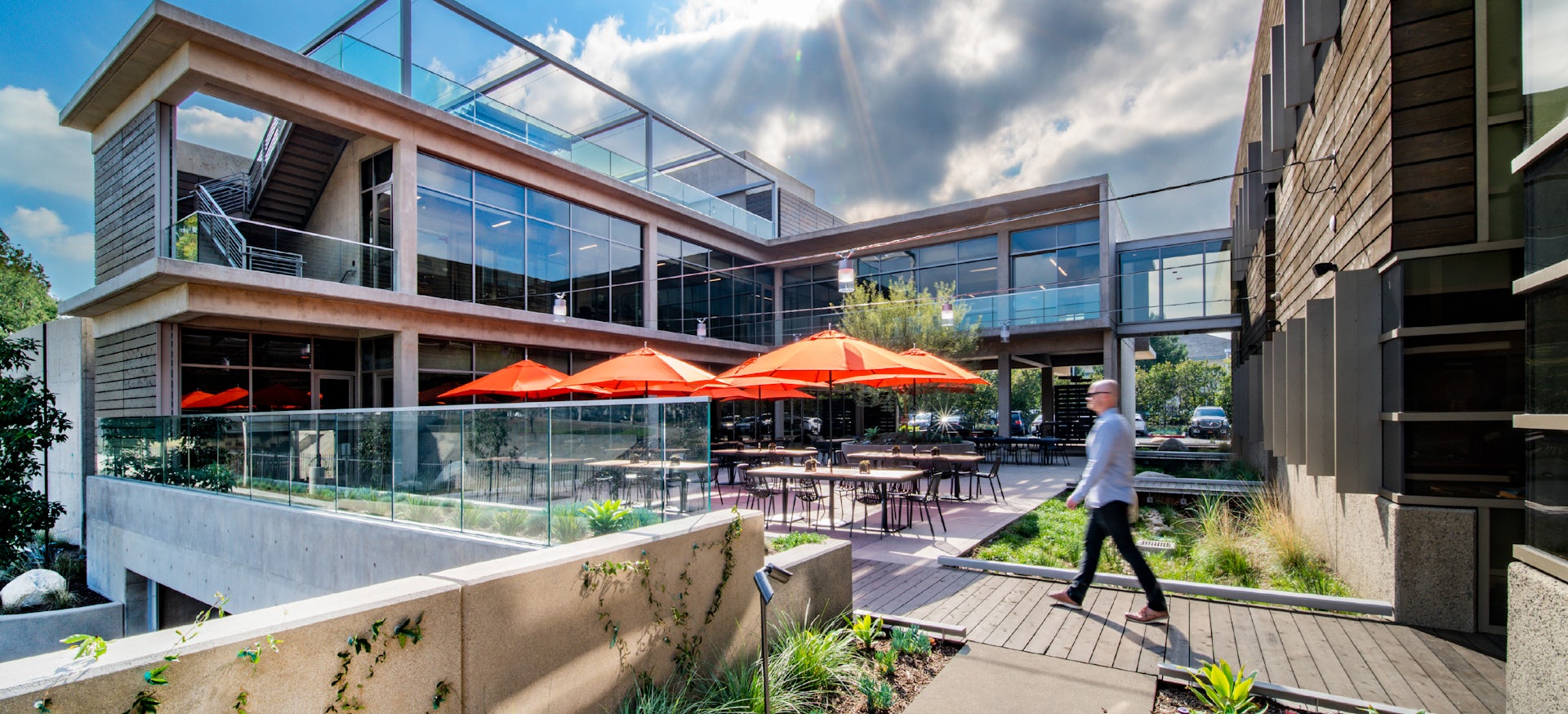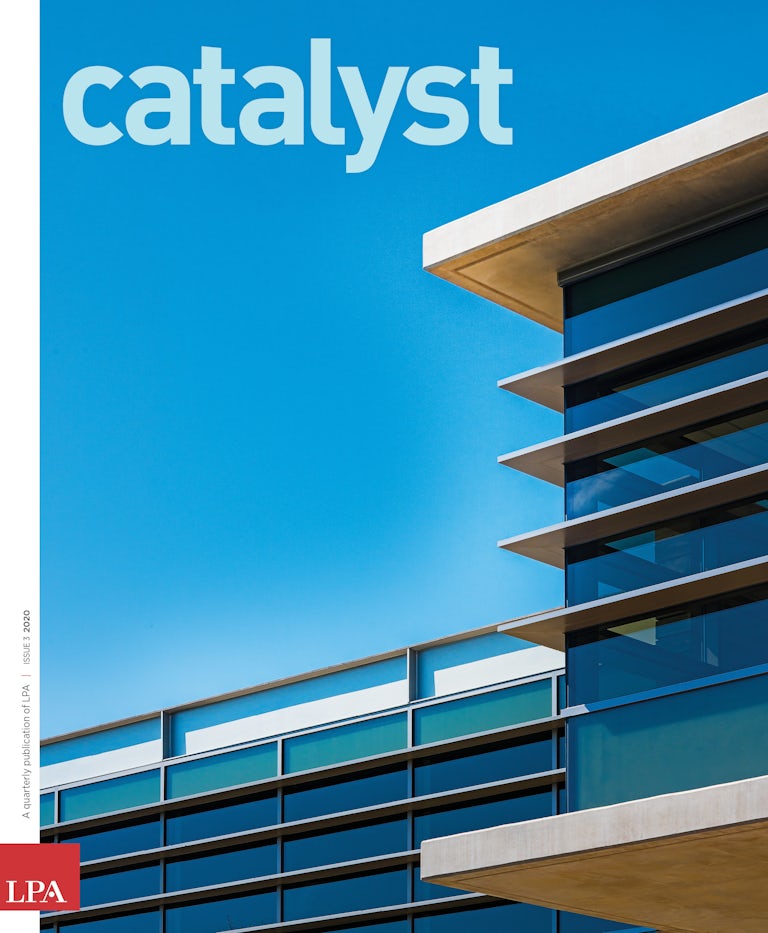The campus for an Irvine, California, financial management company has been 20 years in the making. The development is a series of thoughtful additions designed by LPA, each of which built upon and interpreting the one that came before on the compact site. The latest addition is a new four-story structure that includes office space and exterior work, spaces for social gatherings and subgrade parking. Opened in 2019, this latest phase is designed to meet the company’s technology and workplace goals, while surpassing the AIA 2030 Commitment target of reducing predicted energy use by more than 70 percent.
The design for the campus started in 2000 with construction of a 20,000-square-foot, single-story office building and a 7,000-square-foot recreational facility. The site included a small data center and a series of shared recreation spaces that connected the two buildings.
Connecting the Past and Present
The latest addition to a financial management firm’s campus reflects a 20-year relationship between the company and design firm. The design takes full advantage of the limited site and exceeds rigid energy efficiency standards.

A decade later, the growth of the data-center business reshaped the company’s priorities, as well as its facility needs. At that point, the company opted to swap the functions of the data and fitness centers in order to expand and upgrade the company’s computing capabilities while rightsizing the recreation facilities. The shift required space planning that culminated two years later with the addition of a two-story, 10,000-square-foot office expansion to further support the data-center operations. In 2017, LPA began to design the final phase of the campus, which was added to accommodate the company’s continued growth.
Every step of the campus’ evolution centered on a balanced blend of focused, personal workspaces and active, shared gathering spots, an ethos that required careful optimization of the site, indoor-outdoor connections and appropriate furnishings, says LPA Commercial Design Director Keith Hempel. A fully integrated LPA team, including landscape architects, engineers and lighting designers, collaborated throughout the process, ensuring cohesion, efficiency and a unified approach.

The latest addition had to contend with elements of the previous projects, and was carefully placed between the most recent office expansion and the data center and its accompanying service yard. A new office wing, connected to the existing building, floats above ground. The final phase has been affectionately named the Bridge Building due to its delicate siting between the two existing structures. A roof-deck sits atop the building and provides amazing views of the San Gabriel Mountains.
In a feat of engineering and planning, the design team was able to pack in close to 30,000 square feet of program onto a footprint of about 6,000 square feet. “With this phase in the project, the challenge was where to put the new expansion,” Hempel says. “Our only option was to stack everything vertically.”

The new four-story building helps to frame a new central gathering space for the company headquarters, most often used by the staff during daily lunches for employees. Overlooking the central gathering space on the ground floor are two floors of offices. The new wing connects with the old through a focus on outdoor spaces and a similar material palette, including stained cedar planks, integral color concrete and bronze glazing.
Throughout the process, the designers considered the links to existing facilities, as well as the need to keep the company operational during construction.
“It took a lot of careful planning by the integrated team to coordinate the project, not only structurally speaking to dig the hole for the parking, but also to maintain the continuity of operations on a daily basis while the project was under construction,” Hempel says. “Everything—including the offices and data center—stayed operational the entire time.”

The new wing surpasses the AIA 2030 Commitment of a 70 percent reduction in predicted energy use. This performance was achieved through low- and high-tech means, including careful building orientation. The Bridge Building helps to create shade on the portions of the complex that sit below, reducing heat gain. On the flip side, the building’s envelope is a finely tuned machine outfitted with a super-efficient skin. Inside the building, carefully selected HVAC and lighting systems bring an added level of efficiency that will ultimately be complemented by a set of solar panels that will power portions of the complex.
The landscape is an important design element, providing a consistent framework that further unifies the campus. LPA landscape designers and civil engineers also collaborated on a water conservation system, including filterra units and bioretention planters. Water is channeled to drainage zones and biofiltration systems. Landscape areas are maximized to limit impervious areas onsite and promote the use of outdoor spaces throughout the campus.















